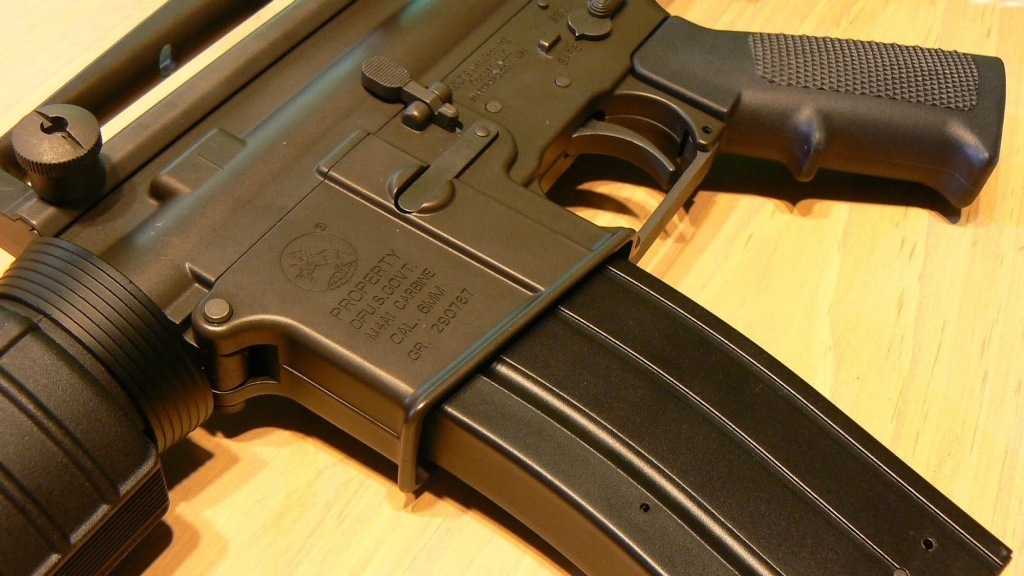
Building an AR Pistol: What to Know to Keep Your Build Legal
The AR-15 pistol is compact, powerful, accurate, and not subject to a federal permit for a short-barreled rifle. The legal requirements for building an AR pistol are the same as those for anyone who shoots a pistol, including those purchased from a factory.
Legal Definition of an AR-15 Pistol
According to the National Firearms act of 1934, the legal definition of firearms states that a rifle has to have a barrel length of at least 16 inches or it is considered a Title II weapon. Title II weapons require a special tax stamp to be owned legally and are more heavily regulated than regular rifles. The convenience of a short-barrel rifle results in a lot of hassle and expense due to it being a Title II weapon.

The AR-15 pistol, even though essentially a short-barreled rifle mechanically, is classified differently. The difference is that an AR pistol cannot legally have a rifle stock affixed to it. This means that by law an AR-15 pistol is a handgun.
Area of Debate
There is debate over the AR-15 pistol’s use of a pistol brace because it can mimic a stock. Even without the brace, the buffer of an AR-15 pistol can be placed against the shoulder in a stock-like manner. Per the Bureau of Alcohol, Tobacco, Firearms, and explosives (ATF) the use of a brace does not make a pistol a rifle just because it can be shouldered
Benefits of an AR-15 Pistol Platform
The AR-15 pistol provides the handiness of a short-barreled rifle without needing to go through the process of having a Title II weapon designation. Going from a 16″ barrel to a 10-1/2″ barrel results in a gun that is easier to maneuver and easy to pack.
Because the AR-15 is legally a pistol, carry permits in most states apply to the AR-15 pistol. This allows a legal means to carry this formidable gun fully loaded and ready inside your vehicle.

Gun Carry Rules and Restrictions
Many of the “shall issue” states for handguns restrict the carrying of a loaded rifle within a vehicle, stating that it must be unloaded. There are some states that do not restrict long guns being transported inside a vehicle if the owner has a carry permit. Concealed Carry offers an online course to get a Texas license to carry. Because most states recognize the AR-15 pistol as a handgun, you are allowed to carry it loaded within your vehicle.
A shall issue state is a state that is required by law to issue a permit to a person once the applicant has met the state’s requirements. The 27 states and U.S. possessions that are shall issue states have no requirements for demonstrating a reason to carry a weapon.
Connecticut is the only state that has discretionary/reasonable issue restrictions. The government has some discretion over the issuance of a carry permit but generally grants the permit to all law-abiding people.
There are 16 states that allow people to carry concealed firearms for lawful purposes without a permit. Nine states have a state law that provides very limited issue and the government has complete discretion in those states. In those states, permits are usually denied.
Federal Firearms Law
The U.S. Federal law restricts who is allowed to possess, receive, ship, or transport firearms or ammunition. Those restrictions include preventing persons less than 18 years old from purchasing a shotgun or rifle, and people under 21 years old are restricted from purchasing a firearm other than a shotgun or rifle.
Anyone over 21 years of age may purchase a handgun from a federally licensed dealer (FFL). Guns must be purchased within the applicant’s state of residence. A dealer must notify the ATF if one individual purchases multiple handguns within a five-day period.
Registered Alien Gun Ownership
Green card holders are foreign nationals who are lawful permanent residents of the United States. Under Federal law, a permanent resident is entitled to purchase a firearm just like any other citizen, as long as there are no disqualifying factors. Whether or not that person can carry a concealed weapon is a matter of state law.
There is a blank on the BATFE Form 4473 where the person’s green card number is entered. Green card holders must prove six months of actual continuous residency, usually by providing six months of water or gas bills.
Building an AR-15 Pistol
Whether you are building an AR-15 pistol or rifle, you should only use new parts. Do not take used components off other guns. There are numerous ways to build and that will affect how you purchase your AR 15 parts.

People new to building AR-15 pistols may encounter unfamiliar terminologies such as forward assist pawl, buffer retainer, and bolt carrier assembly. There are also special tools for AR builds, including the pivot pin depressor, ejector removal tool, and barrel not alignment gauge, in order to build your AR from an 80% lower. You can check out 5D for a great selection of 80 lowers for your custom build.
The steps for assembling the pistol also have unique terminology such as staking the castle nut. If you are new to building AR-15 pistols you may want to watch some build videos or purchase how-to build books to review.
Ways to Obtain an AR-15 Pistol
There are also various options for how you obtain your AR-15 pistol. How involved you want your build to be will depend on which option you choose.
- Purchase the complete gun, which requires no assembly.
- Build the lower and attach a pre-assembled upper.
- Build the upper and attach a pre-assembled lower.
- Attach a pre-assembled upper to a pre-assembled lower.
- Use a mix of pre-assembled sections, parts kits, and stand-alone components.
- Use a mixture of stand-alone components and parts kits.
- Purchase each of the 100 individual components needed to build the gun.
Key Considerations
When purchasing a lower receiver, be aware that striped receivers are transferred as “other.” A gun designated as “other” does not become something until you attach it to a barrel and stock or brace.
Once a receiver has been a long gun (rifle), it cannot be built into a pistol without navigating the NFA. This applies even though the AR-15 receivers are the same regardless of whether built into a handgun or rifle. Always start with a stripped lower or pistol lower because once a rifle, always a rifle.
The length of pull is measured in a straight line from the fact of the trigger to the rear of the brace. The rear of the brace is taken at the most extended position. The ATF states that a braced pistol with a length of pull in excess of 13.5″ may constitute a re-design of the brace into a stock.
The overall length is the muzzle, minus removable muzzle devices, to the rear of the brace. A length greater than 26″ has the potential of changing the classification of the pistol into a firearm.
Pistols with vertical grips installed, even if less than 26″ overall length, can be considered “any other weapon” and be subjected to the NFA. The ATF has determined that foregrips, angled or otherwise, cannot be used on pistol builds.
Stabilizing Brace and Overall Measurement
The ATF states that the use of a pistol stabilizing brace to control a large frame personal defense weapon (PDW) does not change the classification of the host pistol. The building or buying a braced pistol with the intent of circumventing the NFA does change the classification of the pistol to a short-barreled rifle (SBR). A stabilizing pistol brace is not a stock.
The ATF no longer allows the overall gun measurement to include the stabilizing brace. This could result in an AR-15 pistol being under the standard length and subject to NFA regulations if they have a vertical foregrip attached and fall below 26″. Pistols that once measured over 26″ with the stabilizing brace may now fall under that measurement and will be subject to NFA regulation unless the foregrip is removed.
Stabilizing braces are accessories and not relevant to the classification of a pistol under the statutory definition. Any pistol with a vertical grip or stabilizing brace is now considered “any other weapon” and is subject to the registration and fee requirements of the NFA.
Gun owners who do not register their NFA guns are committing a felony. They must register their reclassified gun with stabilizing braces. The only way to avoid this is by removing the vertical grip.
Ordering Your AR-15 Pistol Components
It is important to read and understand the dimensional fine print of the parts you are ordering to make sure they are compatible. When assembling your pistol follow the assembly steps religiously. Some components cannot be installed once others are in place. So, you need all the required information about attachments for AR-15’s.

All AR-15 components can be ordered online and shipped directly to a person’s home or business except for the lower receiver. It does not matter whether the receiver is bare (no parts), partially assembled, or attached to a complete gun. The U.S. government considers the AR-15’s lower receiver to be a gun.
Because the government considers the lower receiver to be a gun, it is serialized, tracked and transported like any other firearm. If you order your receiver online it will be shipped directly to a licensed dealer (FFL) of your choice. It will then be transferred to you with the same fees and paperwork as any other gun.
It is recommended that you keep a small-parts replacement kit for any problems during the build or later repairs. You should also keep all instructions and information sheets for later reference.
Enjoy your Legal AR-15 Pistol Build
Building an AR-15 pistol can be both challenging and rewarding. The key is to make sure you understand both the Federal and State regulations in your area. Purchase only quality AR-15 parts and follow the build instructions carefully.




